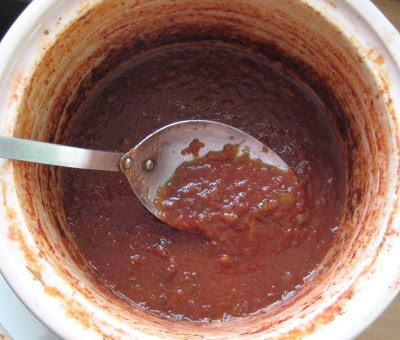"In what seemed like a one step forward, two steps back move, we ended up using the last of our homestead savings on two things: a wood cookstove for the kitchen (one step forward), and an electric air source heat pump (two steps back)."
Chapter 8, "Energy Self-Sufficiency"
It was almost five years ago that we replaced our old oil-burning HVAC with a new heat pump.
I blogged about it, sharing my mixed feelings over getting it. I also mentioned that if we had an air conditioner I would use it. And we have, until this summer.
Energy self-sufficiency has been the most elusive and problematic of all our lifestyle goals. Many folks (including us at one time) think it is simply a matter of replacing purchased power with an off-grid alternative such as solar and/or wind. If one can afford to buy and maintain the systems,
and has adequate sun and wind, these are feasible. If not, well, they aren't. (See "
Energy Self-Sufficiency? Still Just A Dream") Even with alternative energy, however, I doubt that very many off-gridders run their air conditioning, even if they have summers similar to ours.
 |
| (That's 35 - 37 Celsius). July has been a few degrees cooler. |
The other option to being off-grid, is to be non-electric. I lived this way for close to three years in the past. But that was a long time ago and everything was simpler then. No electricity simplifies things tremendously in some ways, but presents problems of its own.
Our part of the country (southeastern US) brings a number of challenges when it remains this hot, particularly with food preservation and storage. (See "
Food Storage in the South") Perishables and leftovers don't keep long when the kitchen and pantry are 90°F (32°C). Lacto-fermenting (sourdough, sauerkraut, kefir, cheese making) becomes difficult as well. If we could somehow manage to generate even just a little of our own electricity, it would go to the refrigerator and freezer.
The decision to not use our air conditioning this summer was one we both knew was coming. I've kept the thermostat set at about 82°F (28°C) anyway, so that turning it on never really cooled the place, it just took the edge off the heat and humidity. This was not for a noble cause, such as reducing our carbon footprint, this was simply what our budget allowed. Taking the next step was just a matter of making the decision and living with it.
 |
| How Riley beats the heat. |
Obviously, we're surviving! And we are not non-electric, which I think needs to be pointed out. We open the windows when the outside temperature cools down in the evening and use box fans to vent the hot air and pull in cooler air. In the morning, when the thermometer climbs until both indoor and outdoor temperatures are about the same, I close the windows and pull the curtains and blinds on the sunny side of the house. We start the day at about 15 Fahrenheit degrees cooler than outside and end it about 10 degrees cooler.
Replacing most of the old, original windows with energy efficient ones, plus proper insulation in the walls, has helped tremendously. We installed ceiling fans in the kitchen, living room, and bedroom, and the moving air makes all the difference in the world.
One thing I have become aware of, is how much heat the refrigerators and freezer generate. I have an extra fridge and my chest freezer in the pantry.
 |
An extra refrigerator and small chest freezer reside in my
pantry. I've been dismayed at how much heat they put out. |
My pantry is now the hottest room in the house. The fridge in the kitchen puts out a lot of heat too, as does washing dishes, which adds a lot of humidity (as do showers). I could add cooking, but I use either
my solar oven or
my summer kitchen for most of my cooking plus canning. That helps keep a lot of heat and humidity out of the house.
I confess that I'm looking forward to cooler weather, but have to admit that an electric bill of only $65 a month has been one small reward. We find ourselves willing to work outside more too, because the temperature difference between inside and out isn't shockingly severe. In fact, if the humidity is lower outside and there's a breeze blowing, it can feel more comfortable than inside, even though the thermometer says it's hotter.
Of course, not everyone has the same homesteading and lifestyles goals we do, and there's nothing wrong with that. That being said, reaching one's goals (whatever they are) is not always easy. Challenges and problems present themselves along the way which must be dealt with if the goal is ever going to be reached. Dan and I still don't have all the answers when it comes to energy and electricity, but we're taking whatever steps we can.


















































